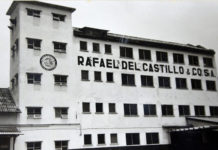At around 5:00 pm on July 7, the Valparaíso Express, a container ship that could easily fit 7 soccer fields, entered the bay of Cartagena as the afternoon dawned and the sun dyed the sky a lively orange that He charged with energy and enthusiasm the more than two hundred workers who would have with him and two other ships, an unprecedented challenge in their workplace - the Contecar terminal of the Puerto de Cartagena Group -.
It arrived at the docking position with its engines off, guided by the practical pilot and driven by tugboats, while the motor ship Calais Trader entered the bay, which would dock at an adjacent dock. With these two ships, an important operation for the port history of the country began. Work was done on the unloading and loading of both motor ships without rest until the hour most anticipated by all the operators, 4:00 am, when another colossal ship, 333.2 meters long and 48.23 meters wide, called Guayaquil Express, arrived for the 2,199 container movements it required to continue its journey to Europe.
Between the three ships, 5,143 containers were moved, of which 360 were for import containers, 316 for export containers and 4,467 for transshipment containers.
Many lives are connected in an operation like this. Colombian farmers who have planted and cared for products such as coffee, avocado, flowers, cocoa, among other fruits, with a chain that includes distributors, marketers, exporters, logistics, until reaching final consumers in different parts of the world.
Not only growers, but also producers or marketers of petroleum derivatives, non-drug chemicals, wood, leather, shoes, among others, are part of the list of products that were exported in this operation.
Likewise, we supply ourselves with machinery, industrial equipment, oils, pharmaceutical products, tires, among others that are imported and arrived on the aforementioned ships.
Each worker puts a special effort and together with the institutions that monitor and guarantee the correct functioning of Colombian foreign trade, there are many lives that are connected with the desire to keep the economy active and with it, the possibilities of development and well-being of both individuals as well as societies. A commitment to transform the future from present activities.
Operation details
12 crane operators, 49 RTG operators, 117 truck drivers, 13 checkers, 13 gatekeepers, 3 operations controllers, 2 yard planners, 1 equipment controller, 1 RTG controller, 1 operations coordinator, 8 people were required. for handling refrigerated cargo, among others.
“There were 10 years of preparation to face an operational challenge that required a lot of planning, synchronization and expertise from a large number of collaborators, also conditioned by the measures that have been necessary to adopt due to the pandemic,” said Karina Kure, director of Human Management. of the Puerto de Cartagena Group.
Additionally, it was necessary to simultaneously commission 13 Super Post Panamax cranes, which moved in step with the enthusiasm of more than two hundred operators who were experiencing for the first time the operation of three ships, two of them large, at the same time.
“It was an important operational challenge for the port staff because for the first time we operated three ships simultaneously with thirteen gantry cranes, two of the ships were large, and we are happy to have responded to the demands of the market, we hope to continue with These types of challenges invite us to be more competitive and strengthen Colombian foreign trade” Alfonso Salas Trujillo, manager of the Puerto de Cartagena Group
About the boats
GUAYAQUIL EXPRESS is a container ship built in 2017, it sails under the flag of Germany, its cargo capacity is 10,589 TEU and its current draft is 13.5 meters. Its total length is 333.18 meters and its width is 48.2 meters.
VALPARAISO EXPRESS is a container ship built in 2016, it sails under the German flag, its cargo capacity is 10,500 TEU and its current draft is 11 meters. Its total length (LOA) is 333.2 meters and its width is 48.23 meters.
Both ships belong to the Hapag Lloyd shipping line, which has been consolidating itself as the busiest in the Group's terminals. In 2019 it increased its transshipments by 30%, for a total volume close to 944,000 TEU.
“This operation is another example of the confidence of the shipping lines in our operations and the capabilities of an incredible human team that guarantees productivity, operational efficiency and competitiveness for the country,” said Alfonso Salas Trujillo, manager of the Port of Cartagena Group. .
In the midst of COVID-19
This operation involved a greater challenge taking into account the Covid-19 pandemic. It is important to remember that the companies of the Puerto de Cartagena Group are the first port companies in Latin America certified with the SAFEGUARD protection seal from Bureau Veritas for guaranteeing good practices and compliance with biosafety measures to control the risk of contagion by COVID. -19.
Port of Cartagena Group
Logistics and port platform in the Caribbean, with world-class productivity indicators. Classified by ECLAC as the fourth port with the largest cargo movement in Latin America and by UNCTAD as the port with the greatest connectivity in the region. Currently, it is the main export port of Colombia and was recognized for the tenth time as the Best Port in the Greater Caribbean by the Caribbean Shipping Association.




